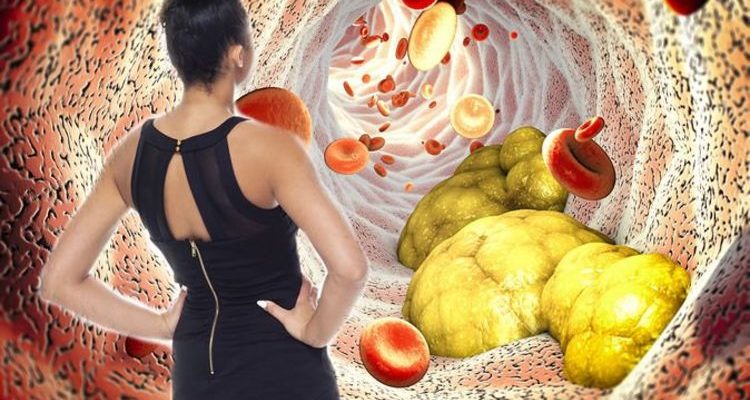This Morning's Dr Chris discusses the signs of high cholesterol
We use your sign-up to provide content in ways you’ve consented to and to improve our understanding of you. This may include adverts from us and 3rd parties based on our understanding. You can unsubscribe at any time. More info
Cholesterol is a fatty substance found in your blood. It is produced naturally in the liver. We need some cholesterol to stay healthy. It is used to make certain hormones and vitamin D, as well as bile acids, which help digest and absorb dietary fat. Having too much of this substance is a known precursor for heart attacks and heart disease. Affected posture, cramps and problems with walking have been associated with high cholesterol. What is the connection?
The most dangerous aspect about cholesterol build-up is that the condition shows no symptoms until it reaches a dangerous level and starts affecting your daily life.
The only way to diagnose and prevent it is by getting a regular blood check-up.
When the cholesterol level rises in the blood to an extreme level, it starts to affect a person’s legs.
Does having high cholesterol affect a person’s posture too?

In a study published in the National Library of Health, how high cholesterol affects a person’s posture in adult men and women was investigated.
The effect of movement from the supine to the standing position on the magnitude of change in serum lipid and lipoprotein levels and its impact on the prediction of risk for coronary heart disease was investigated in 23 male and 18 female subjects.
The study found that thirty minutes of standing following thirty minutes in the supine position was associated with haemoconcentration and a significant plasma volume reduction of -13.8 percent for men and women combined.
“Posture-related increases in serum lipids and lipoproteins were similar among both men and women and averaged +12 percent for triglycerides, +9.3 percent for total cholesterol, +9.0 percent for low-density lipoprotein + very low-density lipoprotein cholesterol, and +10.4 percent for high-density lipoprotein cholesterol,” noted the study.
It concluded: “Our findings indicate that body position at time of blood withdrawal significantly influences lipid and lipoprotein levels, and depending on the absolute concentration values of total or high-density lipoprotein cholesterol, can alter the predictive risk for coronary heart disease.”
Walking issues
When the arteries of your legs are clogged, a sufficient amount of oxygen-rich blood does not reach your lower part.
It can make your leg feel heavy and tired. Most people with high cholesterol levels complain about burning pain in the lower limbs.
One may feel pain in any part of the leg like thighs or calves.
The pain is mainly felt when the person walks, even for a small distance.

Intense leg cramps when sleeping is another common symptom of high cholesterol levels damaging the arteries of the lower limbs.
The cramps or spasms are mostly felt in the heel, forefoot, or toes.
This symptom is known to get worse at night while sleeping.
Experts recommend dangling the foot off the bed or sitting can be the option to get relief from it.
This is known to help the blood to flow downwards due to gravitational force.
Having high cholesterol is mainly caused by:
- Eating foods high in saturated fat
- Not being active enough
- Smoking
- Having too much body fat, especially around your middle
- Genetics.
Changing what you eat, being more active, and stopping smoking can help get your cholesterol back to a healthy level.
Source: Read Full Article
